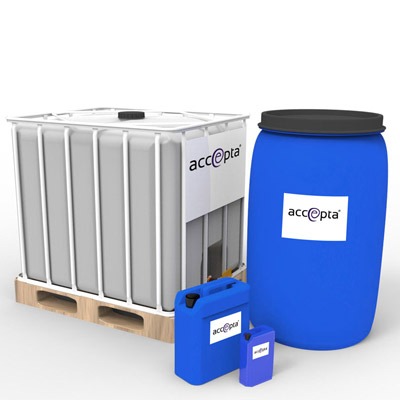Optimizing Item High Quality With Effective Foam Control Methods
Optimizing Item High Quality With Effective Foam Control Methods
Blog Article
A Comprehensive Guide to Applying Foam Control Solutions in Your Workflow
Effective foam control is a crucial facet of functional efficiency that frequently goes neglected. Understanding the complexities of foam generation can dramatically influence both efficiency and product top quality. By checking out crucial aspects such as application compatibility and personnel training, organizations can optimize their foam monitoring efforts.
Understanding Foam Obstacles
Foam challenges are a significant concern throughout different industries, impacting operational performance and product quality. The development of extreme foam can hinder procedures such as blending, transportation, and storage space, resulting in raised downtime and waste. In sectors like food and beverage, drugs, and petrochemicals, foam can hinder assembly line, triggering item disparities and contamination risks.
Additionally, foam can obstruct devices performance, leading to pricey repair work and upkeep. For instance, in wastewater therapy, foam can interfere with clarifier operations, causing lower therapy performance and governing conformity issues.
Comprehending the underlying reasons for foam generation is essential for efficient administration. Variables such as surfactants, temperature level fluctuations, and frustration levels can all add to foam manufacturing. Determining these elements enables markets to apply targeted techniques that lessen foam development while preserving item honesty.
Sorts Of Foam Control Solutions

Mechanical solutions include the use of tools such as foam skimmers or defoamers. Chemical options, on the various other hand, consist of the application of defoaming representatives-- materials that disrupt the foam structure, leading to its collapse. Foam Control.
Last but not least, functional methods focus on process modifications. This may involve customizing tools criteria, such as temperature and stress, or changing the flow prices of fluids to decrease foam generation. Executing great housekeeping methods can also mitigate foam development by reducing pollutants that contribute to foam stability.
Picking the ideal foam control remedy includes evaluating the particular needs of the procedure, consisting of the sort of procedure, the features of the materials involved, and safety and security factors to consider.
Choosing the Right Products
Choosing the right foam control items needs a complete understanding of the particular application and its special difficulties. Elements such as the kind of foam, the atmosphere in which it occurs, and the wanted end result all play crucial functions in product choice. Foam Control. In sectors like food handling, it is important to pick food-grade defoamers that conform with safety guidelines while effectively handling foam.
Additionally, think about the thickness of the fluid where the foam trouble exists. Some products are developed for low-viscosity applications, while others are customized for thicker fluids. Compatibility with existing procedures is one more critical aspect; the chosen foam control representatives need to integrate flawlessly without disrupting general procedures.
Another important element is the technique of application. Some items use this link might require dilution, while others can be applied directly. Assessing the simplicity of use and the required dose can offer understandings into the product's effectiveness and cost-effectiveness.
Execution Strategies
Successful application techniques for foam control options need a methodical technique that lines up item choice with operational requirements. The very first step involves an extensive analysis of the processes where foam occurs, identifying particular areas that necessitate treatment. By involving cross-functional groups, consisting of production, quality, and engineering guarantee, organizations can collect understandings that educate the choice of the most reliable foam control items.
Next, it is crucial to develop clear objectives for foam decrease, making certain that these goals are achievable and quantifiable. This might involve specifying acceptable foam levels and the timelines for implementation. Educating workers on the buildings and application techniques of selected foam control agents is equally crucial, as correct usage is essential for optimum outcomes.
Furthermore, why not try here integrating foam control options into existing operations requires mindful planning. Organizations needs to establish a phased implementation plan, enabling changes based on first outcomes. Routine interaction and comments loopholes with staff entailed in the process will facilitate timely problem-solving and cultivate a culture of constant improvement. Eventually, a well-structured approach will boost functional efficiency while properly managing foam-related difficulties.
Tracking and Examining Performance
Monitoring and evaluating the efficiency of foam control solutions is necessary for ensuring that executed techniques produce the preferred results. This procedure involves systematic data collection and analysis to examine the efficiency of foam control representatives and strategies. Trick efficiency indications (KPIs) should be established prior to application, enabling a clear baseline against which to measure progress.

Assessing efficiency likewise needs routine reviews of foam control procedures and agent efficacy. This can be accomplished through sampling and screening, permitting drivers to establish if present solutions are fulfilling functional requirements. Moreover, it is critical to obtain comments from employee that connect with these systems daily, as their understandings can expose functional subtleties that measurable data may overlook.

Ultimately, an organized surveillance and evaluation structure aids determine essential changes, making certain that foam control remedies stay efficient, affordable, and straightened with business objectives.
Final Thought
In final thought, efficient foam control solutions are crucial for enhancing functional efficiency and preserving product high quality. A thorough understanding of foam difficulties, incorporated with the selection of proper products and execution approaches, facilitates the effective monitoring of foam generation.
Executing great housekeeping techniques can additionally alleviate foam development by decreasing pollutants that add to foam security.
Choosing the right foam control products calls for a comprehensive understanding of the certain application and its one-of-a-kind challenges (Foam Control).Successful application strategies for foam control solutions visit their website need a methodical strategy that straightens item choice with functional needs.In conclusion, effective foam control services are necessary for maximizing operational effectiveness and preserving item high quality. A detailed understanding of foam obstacles, incorporated with the choice of ideal products and implementation strategies, helps with the successful monitoring of foam generation
Report this page